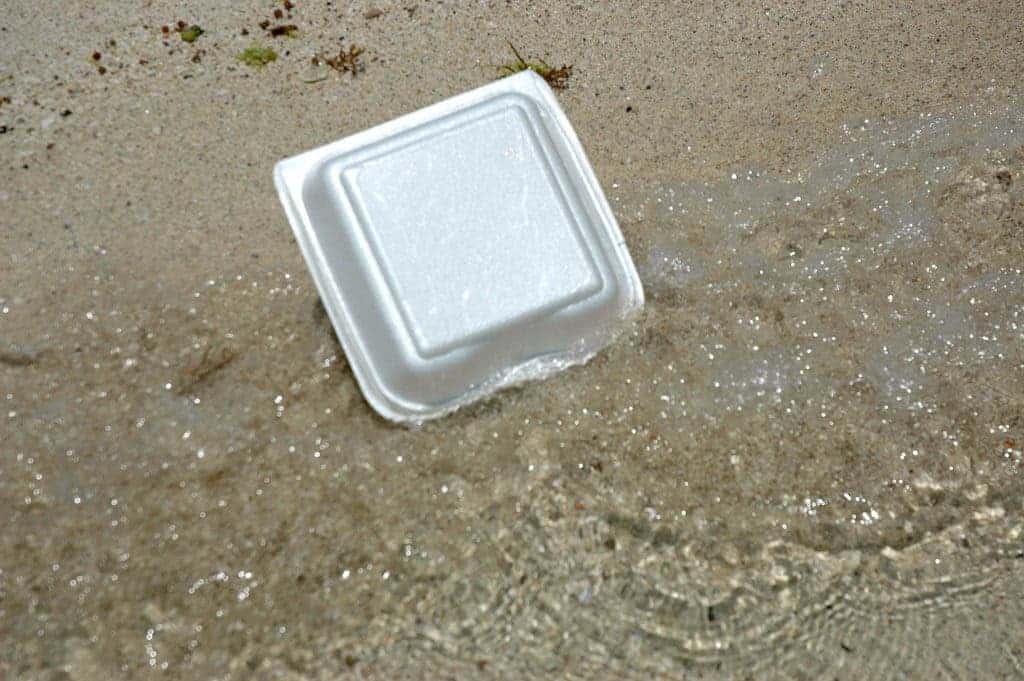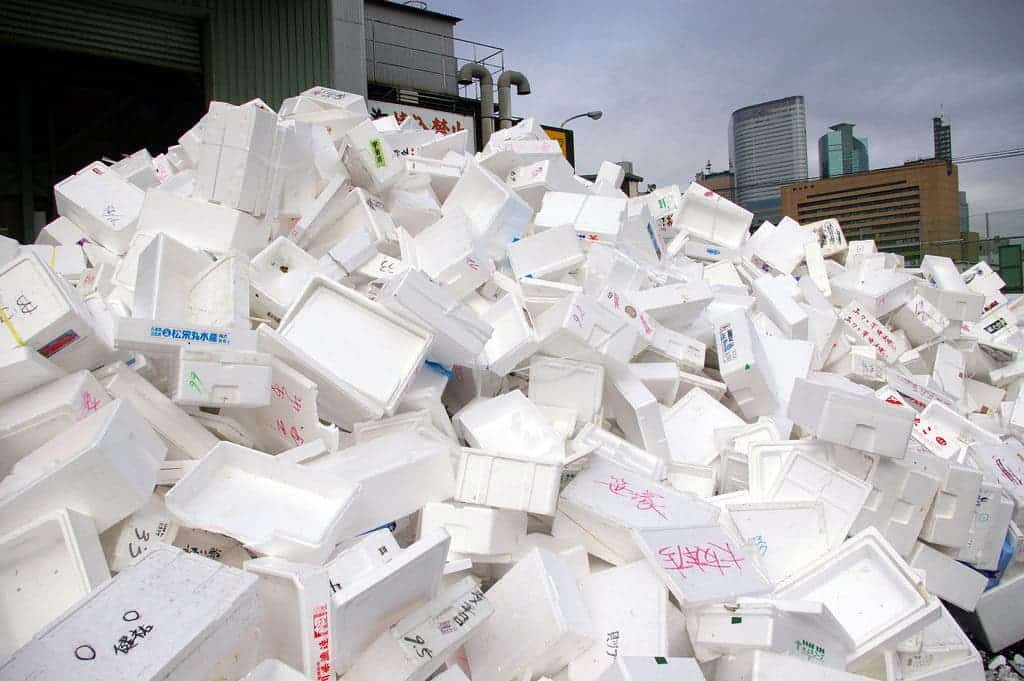Imagine I’m walking on the beach. I’m feeling the sand between my toes, gazing at the beautiful sunset on the horizon and thinking about how good that ocean water will feel on my skin. Then, the moment ends rudely.
What is ruining this idyllic scene? A Styrofoam cup? A piece of a Styrofoam container? A cluster of tiny white balls that I’ve mistaken for something natural? No, it’s just Styrofoam. (Styrofoam is a brand name for polystyrene or expanded polystyrene foam.)
Whether Styrofoam ends up on our beaches as litter left by careless beachgoers or as litter washed ashore by ocean currents, Styrofoam is here to stay unless we ban its use worldwide.
Styrofoam’s Durability Is Bad for the Environment and for Humans
Although the ecological and human health risks of Styrofoam are yet to be quantified, there are many reasons to ban Styrofoam from our lives forever. The best reason is this substance lasts forever. Styrofoam never completely degrades; it just continues to cycle through our environment ruining our ecosystems and our health.
The Better Caribbean Program, based in Barbados, works to influence global and local businesses in the Caribbean to avoid the use of Styrofoam.
Why Styrofoam is bad for the environment
This list of reasons adapted from Clean Water Action, a California environmental groups, emphasizes the relevance of eliminating Styrofoam from our lives:
- Styrofoam contains benzene and styrene, two known carcinogens. These chemicals can leach into our food or drinks.
- There are alternatives to Styrofoam. For example, we could use reusable containers made of recyclable/recycled plastic or glass. Other options include biodegradable or compostable materials and containers, eco-friendly packaging, and wrap made from sugarcane, corn, and other plant-based materials.
- The adverse health effects of styrene intensify when we heat or burn Styrofoam.
- Short-term exposure to styrene can cause eye, mucous membrane, and gastrointestinal irritation.
- Long-term exposure to styrene can cause headaches, depression, fatigue, physical weakness, and hearing loss.
- Long-term exposure to styrene also increases the risk of leukemia and lymphoma. This exposure also harms the liver, kidneys, and stomach.
- Styrene can increase levels of fatigue and decrease the ability to concentrate.
- Styrene disrupts normal hormone functions, resulting in thyroid problems and other hormone-related problems.
- Styrofoam takes 500 years to break down under optimal conditions. But most Styrofoam we use never breaks down.
- As Styrofoam breaks into smaller pieces, it becomes more difficult to clean up. Styrofoam pieces block our drains. Styrofoam particles embed themselves in our soil or float out to sea. This is costly for island and coastal economies that depend heavily on tourism and agriculture.
- Expanded polystyrene foam is 98% air. This means that when Styrofoam is left in our environment, it fills with rainwater and creates mosquito breeding grounds.
- Styrofoam takes up valuable space in our landfills. Eventually, we will run out of landfill space if we continue to use Styrofoam. In Trinidad, 32.95 tons of expanded polystyrene are thrown away daily.
- When Styrofoam ends up in our streams, rivers, and oceans, marine organisms eat it. Marine organisms suffer because Styrofoam causes choking, starvation, and a buildup of toxic chemicals in their tissues. In addition to killing turtles, fish, and seabirds, the toxic chemical buildup in these organisms over time ends up in our food supply.
- When marine organisms try to digest Styrofoam, they cannot perform their normal activities helping the ecosystem. As a result, the marine ecosystem suffers disruption.
- With the stress of climate change and pollution, our oceans and coastlines cannot afford the extra stress from Styrofoam without compromising the ecosystem services that our bodies of water provide for us daily. That includes food, filtration, climate regulation, healthy coral reefs, and storm protection.
Green economy products already exist, ranging from sugarcane bagasse, recycled pet bottles, burlap/crocus/jute, cotton/linen canvas, and hemp. So why is there still a perception that Styrofoam is cheaper than biodegradable options? If we just look at upfront costs, biodegradable options are $0.10 to $0.40 more.
Can incentives for biodegradable options really deal with the issue? Yes, but not unless there is a phase-in plan to introduce biodegradable options at the local level. India, some U.S. states, Guyana, St. Vincent, Trinidad, and Barbados are taking steps to ban Styrofoam or plastics. In time, perhaps other countries will see the ecological, financial, and health benefits of removing Styrofoam from their environments.











